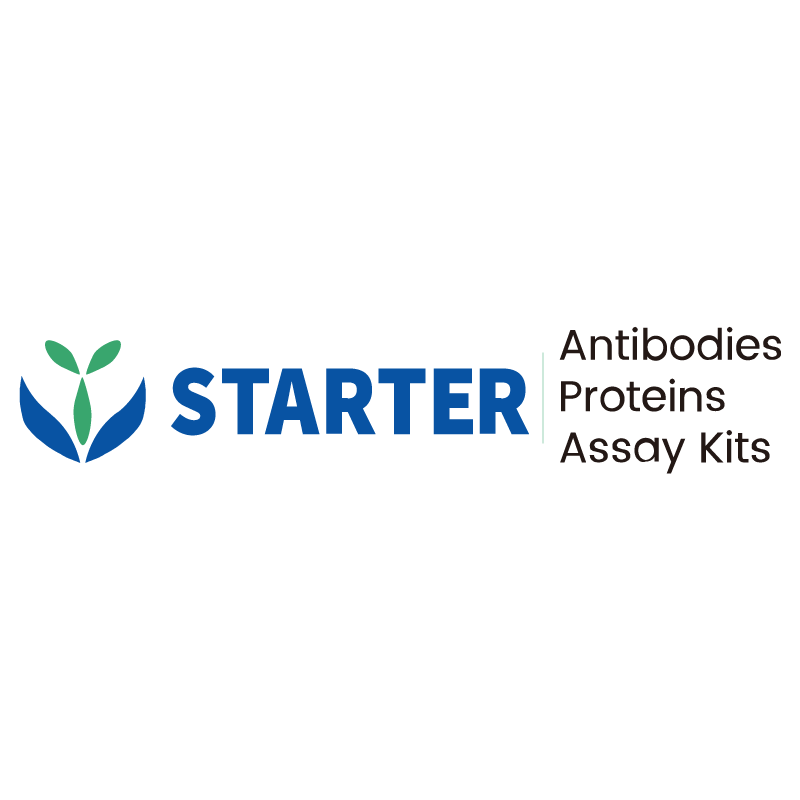WB result of Tuberin/TSC2 Recombinant Rabbit mAb
Primary antibody: Tuberin/TSC2 Recombinant Rabbit mAb at 1/1000 dilution
Lane 1: SH-SY5Y whole cell lysate 20 µg
Lane 2: HeLa whole cell lysate 20 µg
Lane 3: PC-3 whole cell lysate 20 µg
Lane 4: LNCaP whole cell lysate 20 µg
Secondary antibody: Goat Anti-rabbit IgG, (H+L), HRP conjugated at 1/10000 dilution
Predicted MW: 200 kDa
Observed MW: 200 kDa
Product Details
Product Details
Product Specification
| Host | Rabbit |
| Antigen | Tuberin/TSC2 |
| Synonyms | Tuberous sclerosis 2 protein |
| Immunogen | Synthetic Peptide |
| Location | Cytoplasm |
| Accession | P49815 |
| Clone Number | S-1138-125 |
| Antibody Type | Recombinant mAb |
| Isotype | IgG |
| Application | WB, IHC-P, IP |
| Reactivity | Hu, Ms, Rt |
| Purification | Protein A |
| Concentration | 0.5 mg/ml |
| Conjugation | Unconjugated |
| Physical Appearance | Liquid |
| Storage Buffer | PBS, 40% Glycerol, 0.05% BSA, 0.03% Proclin 300 |
| Stability & Storage | 12 months from date of receipt / reconstitution, -20 °C as supplied |
Dilution
| application | dilution | species |
| WB | 1:1000 | null |
| IP | 1:50 | null |
| IHC-P | 1:200 | null |
Background
Tuberin, the protein product of the TSC2 gene, is a tumor suppressor that plays a critical role in regulating cell growth, proliferation, and survival. It functions as a negative regulator in the mammalian target of rapamycin (mTOR) pathway, which controls cell growth in response to nutrients, growth factors, and energy status. Tuberin forms a complex with hamartin, another protein encoded by the TSC1 gene, and this complex functions to inhibit the GTPase activity of Rheb, a small G-protein that activates mTOR. Tuberin is sensitive to various cellular signals and can be modulated by a range of receptor tyrosine kinases (RTKs) and G protein-coupled receptors (GPCRs), indicating its role in integrating diverse cellular signals. It is also involved in other cellular processes such as transcriptional regulation, DNA repair, and endocytosis. Mutations or loss of function of tuberin lead to constitutive activation of the mTOR pathway, resulting in uncontrolled cell growth and proliferation, which is a hallmark of tuberous sclerosis complex (TSC), a genetic disorder characterized by the development of benign tumors in multiple organs.
Picture
Picture
Western Blot
WB result of Tuberin/TSC2 Recombinant Rabbit mAb
Primary antibody: Tuberin/TSC2 Recombinant Rabbit mAb at 1/1000 dilution
Lane 1: NIH/3T3 whole cell lysate 20 µg
Secondary antibody: Goat Anti-rabbit IgG, (H+L), HRP conjugated at 1/10000 dilution
Predicted MW: 200 kDa
Observed MW: 200 kDa
WB result of Tuberin/TSC2 Recombinant Rabbit mAb
Primary antibody: Tuberin/TSC2 Recombinant Rabbit mAb at 1/1000 dilution
Lane 1: C6 whole cell lysate 20 µg
Secondary antibody: Goat Anti-rabbit IgG, (H+L), HRP conjugated at 1/10000 dilution
Predicted MW: 200 kDa
Observed MW: 200 kDa
IP
Tuberin/TSC2 Rabbit mAb at 1/50 dilution (1 µg) immunoprecipitating Tuberin/TSC2 in 0.4 mg HeLa whole cell lysate.
Western blot was performed on the immunoprecipitate using Tuberin/TSC2 Rabbit mAb at 1/1000 dilution.
Secondary antibody (HRP) for IP was used at 1/1000 dilution.
Lane 1: HeLa whole cell lysate 20 µg (Input)
Lane 2: Tuberin/TSC2 Rabbit mAb IP in HeLa whole cell lysate
Lane 3: Rabbit monoclonal IgG IP in HeLa whole cell lysate
Predicted MW: 200 kDa
Observed MW: 200 kDa
Immunohistochemistry
IHC shows positive staining in paraffin-embedded human stomach. Anti- Tuberin/TSC2 antibody was used at 1/200 dilution, followed by a HRP Polymer for Mouse & Rabbit IgG (ready to use). Counterstained with hematoxylin. Heat mediated antigen retrieval with Tris/EDTA buffer pH9.0 was performed before commencing with IHC staining protocol.
IHC shows positive staining in paraffin-embedded human testis. Anti- Tuberin/TSC2 antibody was used at 1/200 dilution, followed by a HRP Polymer for Mouse & Rabbit IgG (ready to use). Counterstained with hematoxylin. Heat mediated antigen retrieval with Tris/EDTA buffer pH9.0 was performed before commencing with IHC staining protocol.
IHC shows positive staining in paraffin-embedded human ovarian cancer. Anti- Tuberin/TSC2 antibody was used at 1/200 dilution, followed by a HRP Polymer for Mouse & Rabbit IgG (ready to use). Counterstained with hematoxylin. Heat mediated antigen retrieval with Tris/EDTA buffer pH9.0 was performed before commencing with IHC staining protocol.
IHC shows positive staining in paraffin-embedded mouse stomach. Anti- Tuberin/TSC2 antibody was used at 1/200 dilution, followed by a HRP Polymer for Mouse & Rabbit IgG (ready to use). Counterstained with hematoxylin. Heat mediated antigen retrieval with Tris/EDTA buffer pH9.0 was performed before commencing with IHC staining protocol.
IHC shows positive staining in paraffin-embedded rat stomach. Anti- Tuberin/TSC2 antibody was used at 1/200 dilution, followed by a HRP Polymer for Mouse & Rabbit IgG (ready to use). Counterstained with hematoxylin. Heat mediated antigen retrieval with Tris/EDTA buffer pH9.0 was performed before commencing with IHC staining protocol.


